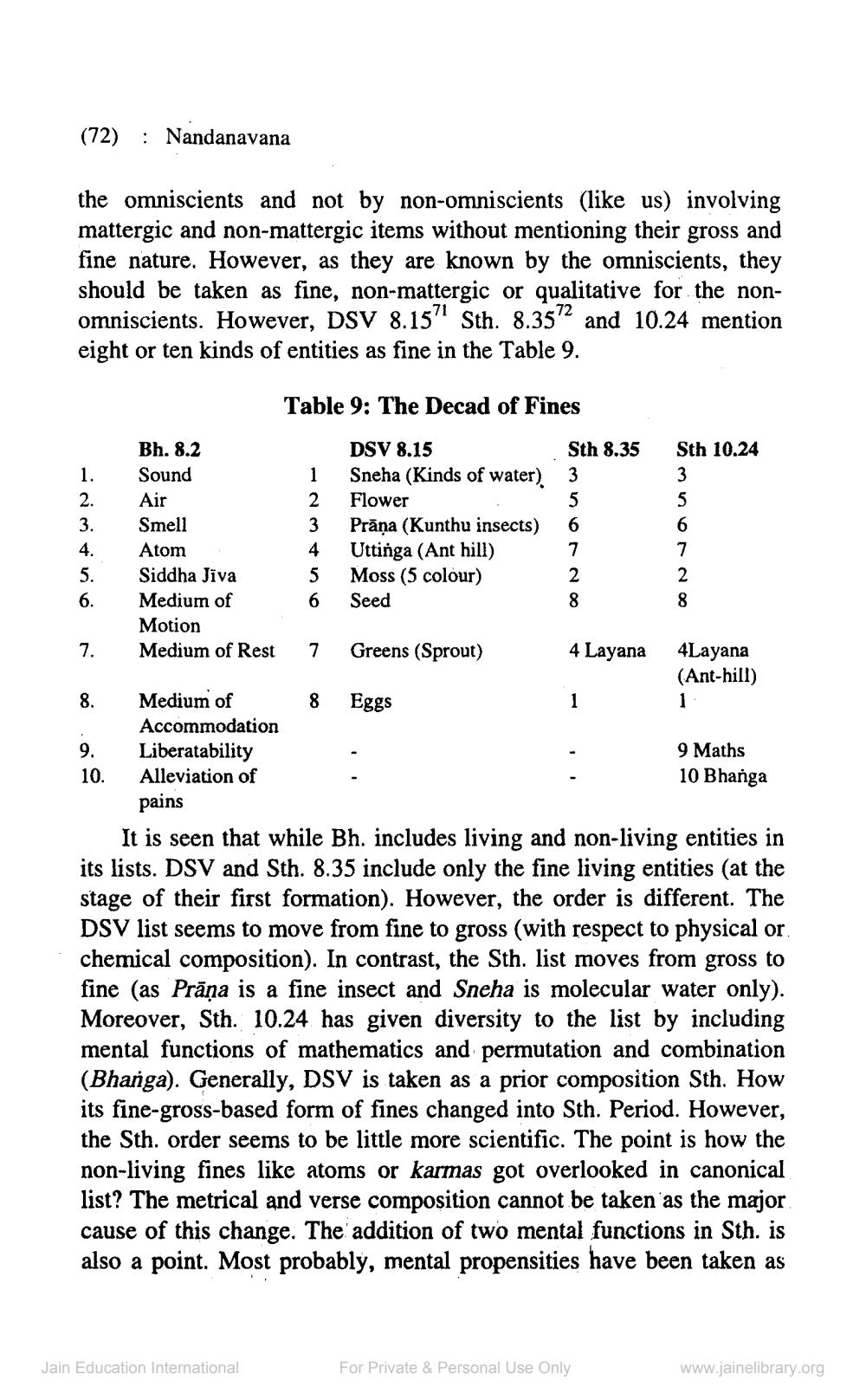________________
(72) : Nandanavana
the omniscients and not by non-omniscients (like us) involving mattergic and non-mattergic items without mentioning their gross and fine nature. However, as they are known by the omniscients, they should be taken as fine, non-mattergic or qualitative for the nonomniscients. However, DSV 8.157 Sth. 8.3572 and 10.24 mention eight or ten kinds of entities as fine in the Table 9.
123
4.
5.
6.
7.
8.
9.
10.
Bh. 8.2
Sound Air
Smell
Atom
Siddha Jiva
Medium of
Motion
Medium of Rest
Medium of
Accommodation
Liberatability
Alleviation of
Table 9: The Decad of Fines
DSV 8.15
Sneha (Kinds of water) 3
Flower
5
6
7
Jain Education International
1
2
3
4
5
6
7
8
Prāņa (Kunthu insects)
Uttinga (Ant hill)
Moss (5 colour)
Seed
Greens (Sprout)
Eggs
Sth 8.35 Sth 10.24
3
5
2
8
4 Layana
1
2672 ∞
For Private & Personal Use Only
8
4Layana (Ant-hill)
1
pains
It is seen that while Bh. includes living and non-living entities in its lists. DSV and Sth. 8.35 include only the fine living entities (at the stage of their first formation). However, the order is different. The DSV list seems to move from fine to gross (with respect to physical or chemical composition). In contrast, the Sth. list moves from gross to fine (as Prāṇa is a fine insect and Sneha is molecular water only). Moreover, Sth. 10.24 has given diversity to the list by including mental functions of mathematics and permutation and combination (Bhanga). Generally, DSV is taken as a prior composition Sth. How its fine-gross-based form of fines changed into Sth. Period. However, the Sth. order seems to be little more scientific. The point is how the non-living fines like atoms or karmas got overlooked in canonical list? The metrical and verse composition cannot be taken as the major cause of this change. The addition of two mental functions in Sth. is also a point. Most probably, mental propensities have been taken as
9 Maths
10 Bhanga
www.jainelibrary.org




